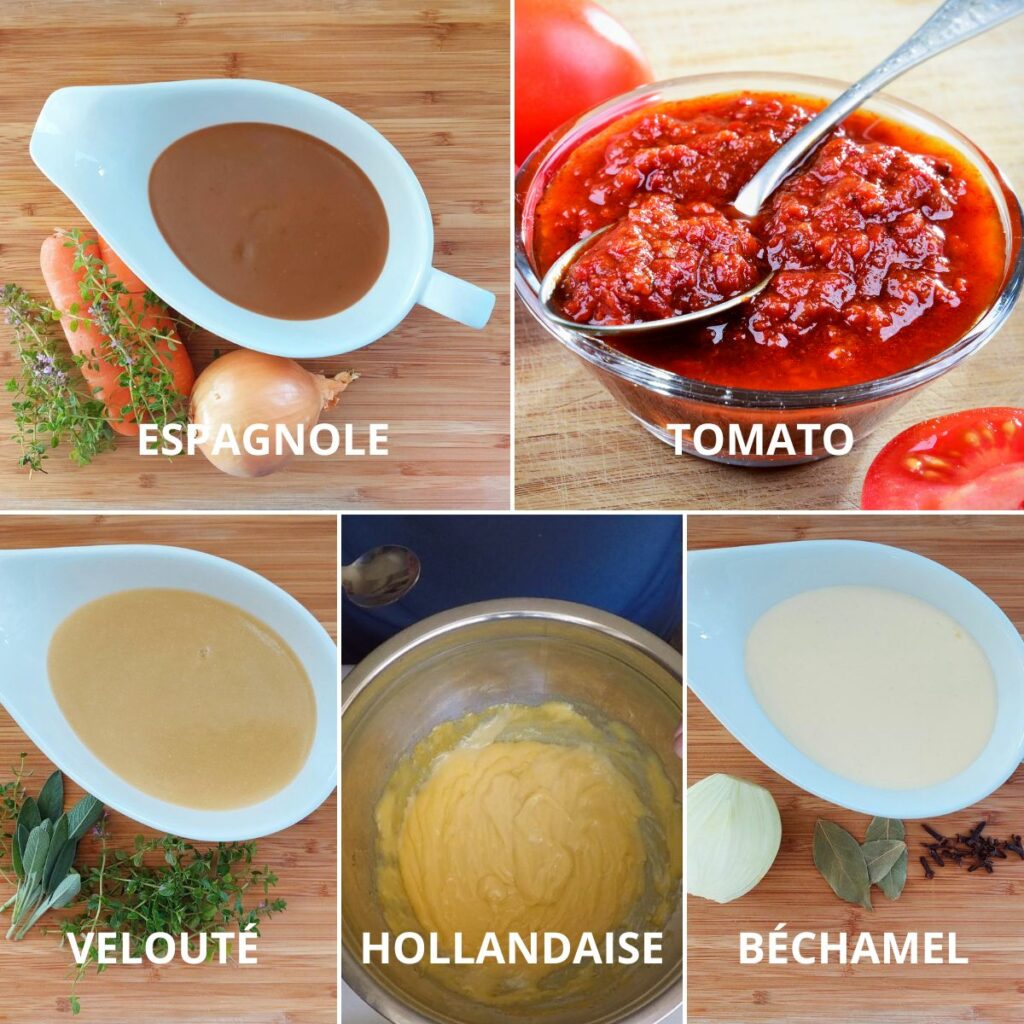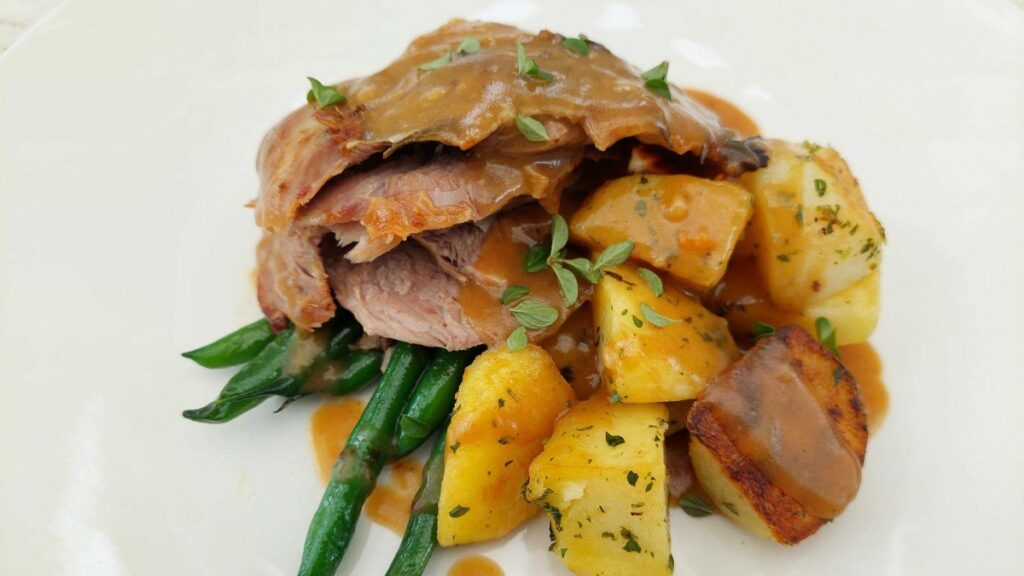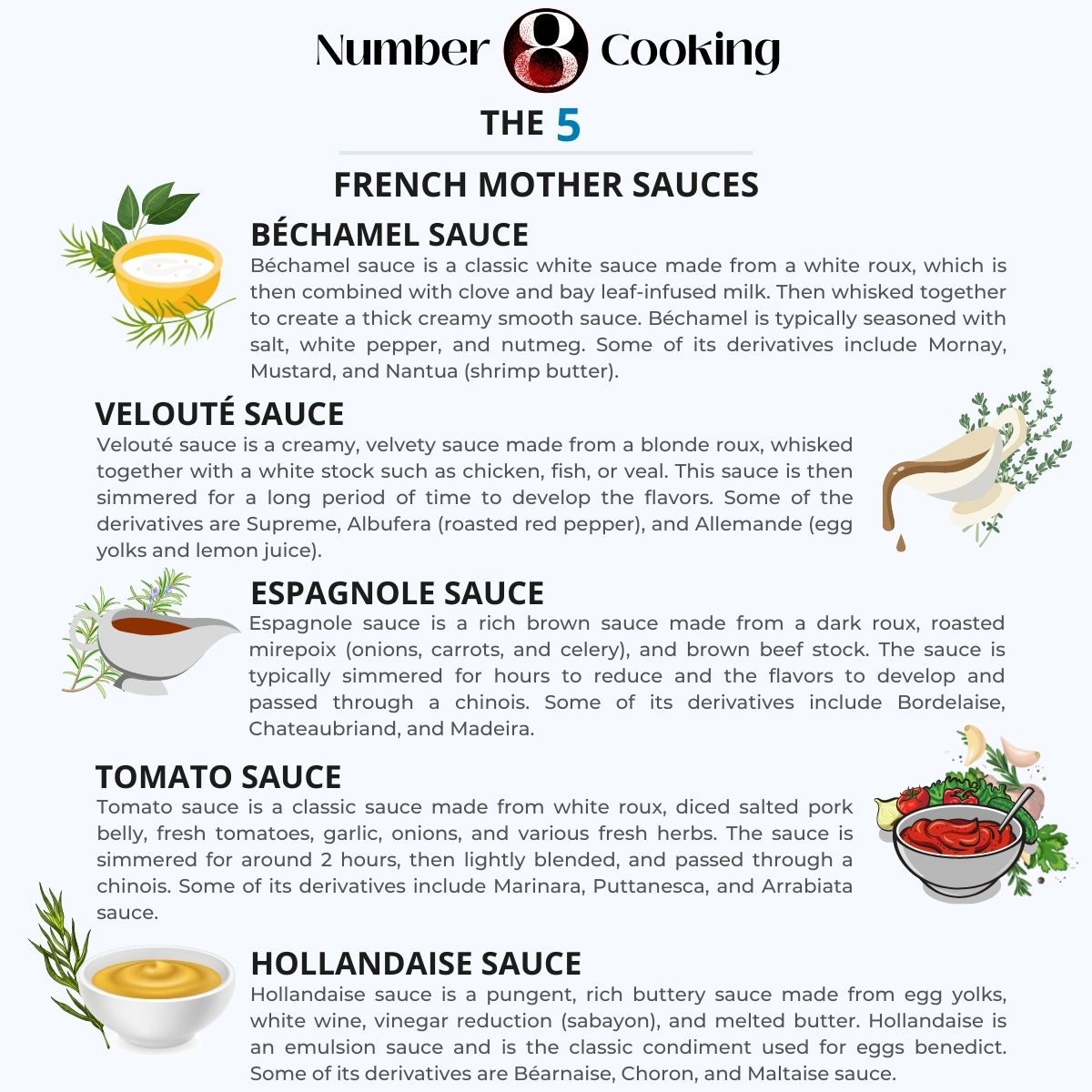Privacy Policy | Terms and Conditions | Disclosure Statement | License Policy
COPYRIGHT © 2024 | NUMBER 8 COOKING | ALL RIGHTS RESERVED.

Privacy Policy | Terms and Conditions | Disclosure Statement | License Policy
COPYRIGHT © 2024 | NUMBER 8 COOKING | ALL RIGHTS RESERVED.

Privacy Policy | Terms and Conditions | Disclosure Statement | License Policy
COPYRIGHT © 2024 | NUMBER 8 COOKING | ALL RIGHTS RESERVED.
The 5 mother sauces and their derivatives are highly underrated in today’s kitchens. Sauces are the unsung heroes of many delicious dishes.
Mastering the art of sauce-making is a handy skill for any home cook and aspiring chef. This is old-school cooking at its finest. When I was a trainee chef many decades ago these sauces were drummed into my mind.
Among the many types of sauces, these five mother sauces form the foundation of modern cooking. These 5 mother sauces are the building blocks of not just French cuisine, but Western cuisine as well.
They have become fundamental to the creation of many other sauces, known as derivatives. In this blog post, we will explore the world of the 5 mother sauces and their derivatives. A look into the history, characteristics, and applications of each sauce.
Whether you’re a chef in training or a home cook enthusiast, understanding these sauces will open up a world of culinary possibilities. Helping to take your sauce-making down new paths of creation. So let’s dive in and explore the saucy side of cooking!

The five mother sauces and their derivatives are the foundation of modern French cuisine. Their origin can be traced back to the 18th century.
It was the French chef Antonin Carême who first recognized the importance of these sauces. He saw them as a means of creating and enhancing flavors in dishes.
Carême identified the first 4 mother sauces as Béchamel, Velouté, Espagnole, and Tomato. These were the basis of nearly all sauces in French cuisine.
Over time, other sauces were developed as derivatives of these mother sauces, with countless variations and combinations created by chefs around the world.
One of the earliest written recipes for a mother sauce was included in Francois Massialot’s cookbook 2nd edition “Le Cuisinier royal et bourgeois” in 1712, which contained a recipe for a brown sauce that would later evolve into Espagnole.
Hollandaise sauce originated in the Netherlands and was documented in a Dutch cookbook from 1593. It later became known as Sauce Isigny, named after a town in Normandy that was renowned for its high-quality butter and cream.
Today, these sauces remain an essential part of French and international cuisine, thanks to Auguste Escoffier. Chefs continue to explore new variations and combinations to create exciting and innovative flavors.
How to season food is an art that combines creativity, intuition, and a deep understanding of flavors. That transforms ordinary ingredients into extraordinary culinary masterpieces.
Sauces are too often looked upon as a second thought. They should be seen as the supporting act for the star on the plate, the unsung heroes.
They add depth, richness, and complexity to a dish, and can transform even the simplest ingredients into a culinary masterpiece.
At the heart of the world of sauces are the 5 mother sauces and their derivatives. These mother sauces are the foundation of countless recipes and variations.
Mastering them is an essential skill for all avid home cooks and aspiring chefs. While each mother sauce has its own distinct characteristics, they share a few key features.
4 of them Béchamel, Velouté, Espagnole, and Tomato are all made with a roux base. Hollandaise is made with a sabayon base and is an emulsion sauce. Hollandaise sauce is also the sauce used in the iconic eggs benedict.
All 5 mother sauces have multiple derivatives and each sauce has its own distinct flavor, texture, and uses.
Béchamel is a creamy, white sauce made from a white roux and milk infused with clove, bay leaf, and onion (clouté) It is seasoned with salt, white pepper, and sometimes freshly ground nutmeg. Some of the Béchamel sauce derivatives are:
Classic Velouté is a light, smooth, velvety sauce made from a blonde roux and chicken stock, or fish, or light veal stock. It is often used as a base for cream soups and as a sauce for poultry and fish dishes. Some of the Velouté sauce derivatives are:
Sauce Espagnole also known as “brown sauce”. Espagnole is a rich and dark sauce that’s made from brown beef stock, brown roux, and mirepoix (a mixture of diced onions, celery, and carrots). This sauce is used to add depth and richness to dishes. Some of the Espagnole sauce derivatives are:

Tomato sauce is made with white roux, diced salted pork belly, fresh tomatoes, garlic, onions, and fresh herbs. Now, in most cases, the roux is omitted and the tomato sauce is thickened by the reduction method. Some of the derivatives of Tomato sauce are:
Hollandaise sauce is a pungent, rich buttery sauce. Made from egg yolks, white wine, and vinegar reduction (sabayon), and whisked together with melted butter. Hollandaise is an emulsion sauce. Some of the Hollandaise sauce derivatives are:
Just a note you can’t make Hollandaise in advance as it will definitely split when reheated. Hollandaise has to be made and used on the same day.

The difference between a mother sauce and a derivative sauce is that a mother sauce is a base sauce used to create other sauces. A derivative sauce adds ingredients to a mother sauce to create a new sauce with unique flavors.
Béchamel sauce is a versatile sauce that can be made into a mornay sauce and used for various dishes. This could include macaroni and cheese, lasagna, and gratins. Or the Bechamel can be made into another derivative, Nanuta, and served with sautéed shrimp, crumbed fish, or broiled lobster.
Yes, you can use different types of flour to make a roux. All-purpose flour is the most commonly used flour. However, you could use high-grade, strong, or “00” flour. Remember that using different types of flour will affect the final texture and flavor of your roux and the sauces you make with it.
Yes, mother sauces can be made ahead of time. Stored in the refrigerator for up to 3 days. This is actually a great way to make mother sauces. This will give them time for the flavors to amalgamate and mature.
I wouldn’t freeze mother sauces as they would most probably split when reheated. Especially Béchamel, and Velouté.
Understanding the 5 mother sauces and their derivatives will be a game-changer in your kitchen.
With these sauces as a foundation, you can take your sauce creation to another whole new level. By making a wide variety of derivatives with rich, complex flavors.
Whether you’re making a classic béarnaise or getting creative with a mushroom velouté, the possibilities are endless.
Remember, making a great sauce takes time, patience, and attention to detail. Don’t be afraid to experiment and try new things. I encourage you to experiment, this is how great food can be created.
With a little practice and the right techniques, you can master the art of sauce-making and elevate your dishes to new heights.
So, next time you’re in the kitchen, take some time to perfect your sauce-making skills. To unlock the 5 mother sauces and their derivatives, this is the saucy side of cooking!